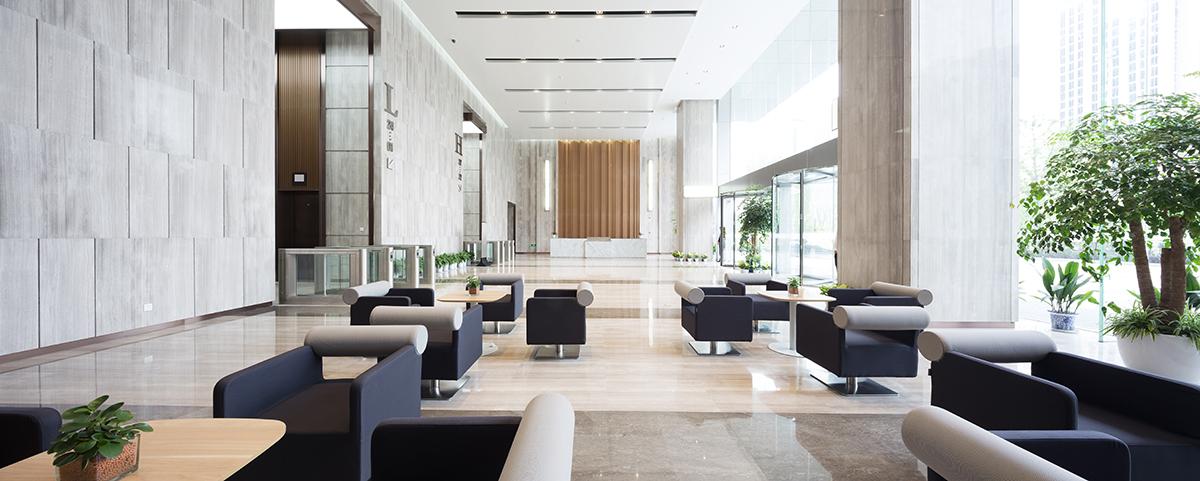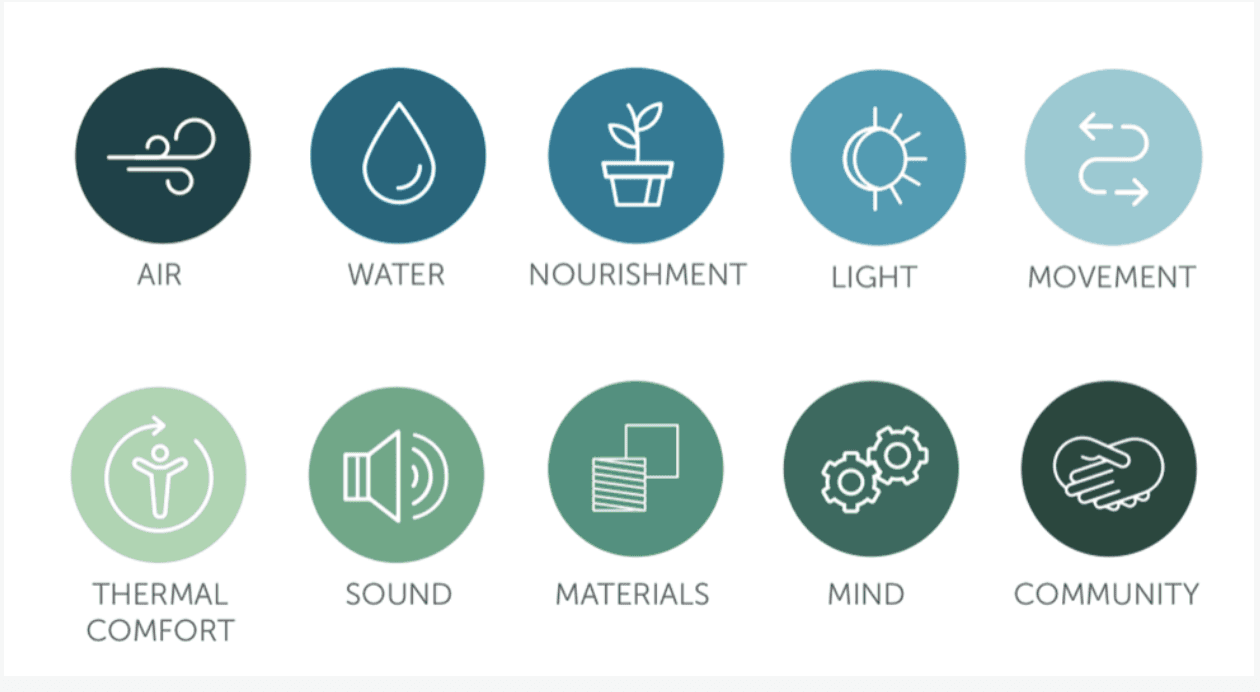May 10, 2021
How to Upgrade Your Building to WELL Building Standards


For businesses, providing a healthy and safe workspace comes with many benefits. Research shows that “characteristics of the physical office environment can have a significant effect on behavior, perceptions, and productivity of employees.”
Thus, making an effort to ensure your staff is working in an environment that benefits their health not only produces more satisfied employees but also has a positive effect on the work they do.
One way to improve your space and elevate the health and wellness of staff or even building patrons is by improving the enviroment. This can be done by following WELL Building Standards.
The WELL building standard is a performance-based system for measuring, certifying, and monitoring features of the built environment that impact human health and well-being. WELL uses medical and related data that explores the connection between buildings and the people who use them.
To obtain a WELL certificate, your building must achieve a passing score in each of the seven basic categories of the WELL standard, which are as follows:
1-Air: Promoting clean air and minimizing indoor air pollution.
2-Water: Availability of clean and safe water.
3-Light: Illumination guidelines for enough natural light.
4-Comfort: Designs for ergonomic, but also acoustic comfort.
5-Nourishment: Access to healthy and fresh food to support good nutrition.
6-Fitness: Providing opportunities for physical activity.
7-Mind: Design and technology to optimize emotional health.

The standard also focuses on other aspects like innovation and sustainability. It looks for innovation that goes beyond the basic requirements and performs controls on materials used in cleaning, for example.
To reach a passing score, changes should be made to the current workspace. This can come in the way of large structural renovations, but this is not necessarily the first step you must take. In making a change, small adjustments or additions can make a big difference.
Air is at the top of the list of categories, and not without reason. The EPA (United States Environmental Protection Agency) explicitly states the importance of indoor air quality. “The link between some common indoor air pollutants …. and health effects is very well established.”
When you think of air, the first thing that comes to mind might not necessarily be the floor. However, flooring, and especially carpet can be of great influence on indoor air quality.
Flooring collects dirt and dust when occupants walk into the building. Any pollution particles that dwell in the air, eventually settle onto the floor. Any foot traffic can easily kick all the dirt particles back up into the air and into our systems.
This issue can easily be addressed by using the right floor cleaning equipment. For example, Cobi 18, an autonomous floor scrubber distributed by ICE Cobotics can be a great help.
Cobi not only cleans thoroughly and effectively but it can be deployed multiple times a day to keep floors clean consistently throughout the day. In this way, using Cobi to clean your floors will contribute to the quality of the air, getting one step closer to that WELL standard.
It is clear that a clean and safe environment is a substantial aspect of the WELL Building Certification. Cleanliness has a significant impact on the air and water categories, but your cleaning routine can also help to target the ‘materials’ category.
This aspect of the WELL Standard requires: “the restriction of hazardous or harmful ingredients in cleaning, disinfection and sanitization products, as well as the establishment of a cleaning plan, the maintenance of a cleaning schedule and program training for staff.”
Equipment that comes with fleet management software can be a great asset to achieving and maintaining a structured cleaning plan and schedule.
Fleet tracking, like i-SYNERGY by ICE Cobotics, can provide you with regular access to cleaning data such as machine run time, square footage cleaned, how oftern the machine runs each day more.
The collection of data allows users to work with teams to create more efficient cleaning plans, leading to better productivity, and on top of that, the use of data allows users to confirm cleanliness.
This means building occupants can be assured they are entering a clean space. This can help to achieve the routine and structure in cleaning that the WELL Standard requires.
Adding cleaning equipment with fleet tracking can be a a great way to manage building cleanlkness, safety and sustainability.
Making this change can help target the requirements of the WELL Building standards.
The availability of clean and safe water is of crucial importance to human health and safety. Water is the body’s main source of nutrition, ensures it can get rid of any toxins and helps prevent diseases. Therefore, supplying your building’s occupants with a clean water supply should be a top priority.
The WELL building standard focuses on the availability of safe water in your establishment. According to the CDC, one important thing you need to do to ensure this safety is to frequently test your water.
“Without regular testing, people may be exposed to contaminants without knowing it or being able to do anything about it.”
When you test the water supply system on a regular basis, you will be able to locate any gaps or issues and fix them before they might cause any exposure to harmful materials.
Our tap water is of comparatively good quality, but it can still have several impurities. Traces of metals, cleansing chemicals, and odors can still be present in water, states Phoxwater.
Installing a water filter on the taps in your building can be an efficient and relatively inexpensive change you can make to address this issue.
A water filter will not only make the drinking water in your building safer and cleaner, but it can also help to neutralize the smell and even the color of the water. This might stimulate occupants to drink more water, which is a great benefit for their health.
Thus, access to safe and clean water not only addresses the water category on the WELL standards list but it can also aids in targeting the fitness and nourishment categories.
ICE Cobotics is an industry-leading technology and cleaning equipment provider specialixing in automation and all-incllusive subscriptions.
Reach out to our Automation Experts to learn more.
Ready to Explore Automation? Talk to an Automation Expert